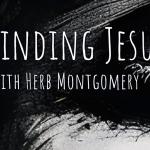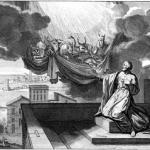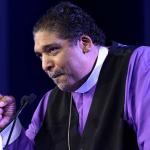By Christopher House
Christopher House will serve as a visiting professor at Memphis Theological Seminary this summer in he Rhetoric Race and Religion Institute teaching a course on the Black Church and HIV/AIDS
**This article first appeared in the March 2012 issue of the Memphis Theological Seminary Journal
Introduction
Over the past three years, I travelled to and conducted research —including ethnographic participant observation and oral history interviewing through in-depth questioning—in Africa, the Caribbean, and the Washington, D.C., area. I sought to understand how religious leaders of African descent have used religious rhetoric as a means by which to help people of African descent lead their lives, reconfigure at-risk behaviors and practices, and to counteract the disproportionate epidemiological presence of HIV/AIDS in their communities. I have interviewed over thirty-five Protestant pastors, bishops, and religious leaders of African descent from these respective regions.
Religious leaders of African descent across the world are addressing HIV/AIDS from the pulpit. While some have approached the issues through narrow rhetorics focused primarily on individual “sin,” others have adopted a more robust approach that recognizes the larger structural/social “sins” that create situations in which HIV/AIDS thrives. Structural issues such as poverty, lack of education, gender inequalities, and sexual discrimination, which disproportionally affect people of African descent, are being met with strong prophetic responses converging at the intersection of Christian ethics, pastoral care, biblical studies, and theology (Bongmba 2). Functioning more than just a women or man of God, the preacher of African descent functions within religious communities as “a teacher, preacher, politician and more recently, a change agent for health” (Francis et al. 165).
Elias Bongmba explains that Christian theology is grounded in the idea that humankind is the imago dei, and thus Christian leaders have the obligation to address any entity that threatens the image of God (3). With such a biblical mandate, black churches and leadership have fought for and played a significant role in the political, social, and spiritual life of not only people of color, but also the oppressed around the world, including more recently people living with HIV/AIDS (PLWHA).
At the heart of prophetic rhetoric is the notion of representation. As prophets or through employing what Andre E. Johnson calls the rhetorical strategy of “prophetic personas,” religious leaders, on the one hand, speak on the behalf of the sacred and on the side of justice, while on the other hand, speak on behalf of the voiceless, oppressed and marginalized PLWHA (268). For the purpose of this paper, I raise questions concerning the inherent rhetorical challenges that religious speakers now face against a historic backdrop of religious discourses of moral judgment against PLWHA.
Prophetic Rhetoric and HIV/AIDS
Many religious rhetorics on HIV/AIDS have been informed by Judeo-Christian religious rhetoric, specifically that of the Hebrew prophets. What Sacvan Bercovitch called the “jeremiad” is a major strand of Hebrew prophetic discourse that is the antithesis of most theories and praxis of rhetoric found in the ancient Near East (Bercovitch xi). In their rhetoric, Hebrew prophets never resorted to flattering governing authorities or kings. The prophets felt so empowered by God in their callings that they often pronounced judgment while standing in the very presence of the said one who is to be the recipient of such judgment. Hebrew prophets were called to speak on behalf of God to hold individual, groups and whole nations accountable for their actions. Thus, Hebrew prophetic rhetoric in a jeremiad sense essentially is a “rhetoric of confrontation.” (House 70). William VanGemeren’s summary of the impact of the prophetic word is instructive, as being that which “afflicts the comfortable and comforts the afflicted” (62).
Within African American culture the jeremiad had its beginning with the abolitionist crusade against slavery in the antebellum North and later became a prime black rhetorical device and “ideological force in the twenty-first century” (Howard-Pitney 13,14). From Marcus Garvey to Martin Luther King Jr., the African American jeremiad was salient in Civil war, post-civil war, civil rights rhetoric, and the black church. Eric Lincoln and Lawrence Mamiya suggest that the black church’s jeremiad’s “prophetic function” refers to its “involvement in political concerns and activities in the wider community” in addressing the historical and contextual issues of the day, be it barriers of injustice, inequality, discrimination, sexism, and/or racism (12). It is within this larger space of discourse where we locate leaders of African descent addressing HIV/AIDS. Take, for example, this statement from an oral history interview given me in 2010 by Reverend Al Miller, Senior pastor of Fellowship Tabernacle, Kingston Jamaica, who pointedly speaks to the appropriateness of prophetic rhetoric within the context of HIV/AIDS:
We must deal not just with the thing [HIV/AIDS] but the systems and structures that facilitate it. . .the poverty, the lack of education, the corruption in the nation all of those things are things that we tackle head-on and literally fight for, for the process of change. Because ultimately that this the only way change is going to come. Change is not going to come simply in the prayer meeting, although the prayer meeting is very important and we ought to pray, like I have been telling my people… having prayed, get up off your knees and get out
there and see what are we going to do to create the real change to those systems and structures that maintain an evil way.
Power, Representation and Religious Rhetoric
To speak on behalf of another is to speak from a privileged position of power. As a speaker, one is given the power to decide what information is of relevance for discussion and thereby rhetorically serving certain interests, while rendering invisible the interests of others. Thus the speaker has the ability to validate what is heuristic — the subjective invention of ideas, concepts, or beliefs to be communicated and given a voice.
Linda Alcoff posits that the practice of speaking for others is problematic in that “there is … a privileging of oneself, as the one who more correctly understands the truth of another’s situation,” in our case PLWHA (35). Historically, the pulpit has been and remains in many religious circles a gendered space. Early responses of religious rhetorics on HIV/AIDS were heard from heterosexual male clergy members who spoke with “prophetic” authority concerning the epidemic declaring it divine judgment. While such ‘judgment’ rhetorics scapegoated members of the gay community as the cause of HIV/AIDS, religious leaders failed to examine the ways in which their privilege as male, heterosexual Christians informed and shaped their rhetorics about HIV/AIDS. These rhetorics were replete with a lack of a nuanced understanding of HIV/AIDS across markers of race, gender, sexual orientation and class. Consequently, religious “othering” of PLWHA was experienced first by the gay community followed by heterosexual men and women who committed sexual acts the church deemed ‘immoral,’ and who were thus reaping what they sow in contracting HIV/AIDS.
Today in speaking on behalf of PLWHA, religious leaders must tread carefully so as not to misrepresent or co-opt their experiences. Alcoff notes that in speaking for another misrepresentation is not always the case nor are those who are spoken for always “worse off” as a result (35). Nevertheless, early findings indicate that PLWHA, who have been placed at the lowest levels of the religious and societal orders, have been objectified as politically correct sermon material on World AIDS Day, as their leaders who occupy the apex of the ecclesiastical hierarchal order unreflexively articulate their experiences of being infected.
In such cases PLWHA were discursively positioned as examples in sermons and in biblical texts that speak about the “person who suffers, rather than on texts in which suffering is focalized by a speaking subject who, him/herself is a suffering subject” (Stone 20). Often through their rhetorical practice of speaking for PLWHA is arguably, “though not always, an erasure and a reinscription of sexual, national, and other kinds of hierarchies” that invariably further afflict the afflicted (Alcoff 26).
In my interviews and in some religious services, testimonies from PLWHA created agency that brought about subject formation as they vocalized their suffering as opposed to being mere objects of the preacher’s rhetoric (Stone 20). My argument is not grounded in the idea of a rhetorical biological determinism in that only religious leaders who are living with HIV/AIDS should speak on behalf of PLWHA because at some point in our journey through life we all have needed someone to speak for us. On the contrary, I am suggesting that religious leaders must be reflexive of the privilege they embody as they prophetically articulate the experiences of others, others once marginalized by their very rhetorics.
Bibliography
Alcoff, Linda. “The Problem of Speaking for Others.” Cultural Critique, Vol 20 (Winter 1991-
92): 5-32.
Bercovitch, Sacvan. The American Jeremiad. Madison: University of Wisconsin Press, 1978.
Bongmba, Elias K. Facing a Pandemic: The African Church and the Crisis of Aids. Waco:
Baylor University Press., 2007.
Francis, Shelly A., Lam, Wendy K., Cance, Jessica D., and Vijaya K. Hogan. “What’s the 411?
Assessing the Feasibility of Providing African American Adolescents with HIV/AIDS
Prevention Education in a Faith-Based Setting.” Journal of Religion and Health. 48, no.2(2009): 164-167.
House, Christopher. “Hebrew Prophetic Oratory: A Rhetoric of Confrontation.” MA thesis.
Syracuse University, 2007.
Howard-Pitney, David. The African American Jeremiad: Appeals for Justice in America.
Philadelphia: Temple University Press, 2005.
Johnson, Andre. “The Prophetic Persona of James Cone and The Rhetorical Theology of Black
Theology.” Black Theology: An International Journal, No 3, (2010): 265-285.
Miller, Al. personal interview. 21 June 2010.
Stone, Ken “Safer Text: Reading Biblical Laments in the Age of AIDS.” Theology Sexuality, 5:
16, (1999): 16-27.
Van Gemeren, William. Interpreting the Prophetic. Michigan: Zondervan
Publishing House, 1990.
[1] Christopher A. House is currently a PhD candidate in Communications at the University of Pittsburg where he also serves as the K. Leroy Irvis Fellow. His dissertation project, “Rhetoric(s) of the Black Church: Race, Religion & HIV/AIDS Across the African Diaspora,” examines the religious rhetoric of pastors of African descent regarding HIV/AIDS. Email:cah115@pitt.edu
















